Migratory Birds of Bandh Baretha Wildlife Sanctuary: A Detailed Guide

Sep 25, 2024
Migratory Birds of Bandh Baretha Wildlife Sanctuary: A Detailed Guide
Introduction
Bandh Baretha Wildlife Sanctuary, located in Rajasthan, India, is a haven for birdwatchers and wildlife enthusiasts. This serene and beautiful sanctuary, nestled amidst the Aravalli Hills, is renowned for its rich biodiversity, particularly the variety of migratory birds that flock here annually. The sanctuary is built around the Bandh Baretha Dam and covers an area of approximately 200 square kilometers. As the winter months approach, thousands of birds migrate from colder regions, transforming the sanctuary into a vibrant avian paradise.
In this blog, we will delve deep into the fascinating world of migratory birds found at Bandh Baretha, exploring why these birds choose this sanctuary, the species you can spot, and the environmental significance of this migratory phenomenon.
-
Overview of Bandh Baretha Wildlife Sanctuary
The Bandh Baretha Wildlife Sanctuary, established primarily for the protection of birds, is a rich habitat that consists of forests, wetlands, and water bodies. Its geographical location and the presence of the Bandh Baretha Dam make it an ideal spot for both migratory and resident birds. The sanctuary provides abundant food and nesting grounds, attracting numerous species from far-off regions.
Key Highlights:
– Location: Bharatpur District, Rajasthan, India
– Established: 1866 (with the dam), later developed as a sanctuary
– Total Area: 368.5 sq km
– Known For: Migratory birds, wetlands, and dense vegetation.
-
Importance of Migratory Birds in Bandh Baretha
Migratory birds play a crucial role in maintaining ecological balance. They help in seed dispersal, act as indicators of climate change, and contribute to pest control. Bandh Baretha serves as a seasonal home to these birds during their migration cycles, which are driven by factors like food availability, temperature, and nesting conditions.
Why do Migratory Birds Flock to Bandh Baretha?
– Food Availability: The sanctuary’s wetlands are rich in fish, crustaceans, and plant material, providing ample sustenance.
– Climatic Conditions: Rajasthan’s temperate winters offer a comfortable climate for birds coming from colder regions.
– Shelter: The dense forests and expansive wetlands offer safe nesting grounds, away from predators.
-
Understanding Migratory Bird Patterns
Migratory birds travel long distances across continents, often covering thousands of kilometers. The phenomenon of migration is instinctual and follows established routes known as flyways. Bandh Baretha lies on the Central Asian Flyway, which extends from Siberia and Central Asia down to the Indian subcontinent.
Key Aspects of Bird Migration:
– Flyways: Defined paths that migratory birds follow annually.
– Navigation: Birds use the position of the sun, stars, and the Earth’s magnetic field to navigate.
– Energy Conservation: Birds often fly in V-formations to conserve energy on their long journeys.
-
Migratory Bird Species Found in Bandh Baretha
Bandh Baretha is home to an astonishing variety of migratory birds, which typically visit during the winter months (October to March). Below are some of the most prominent migratory bird species you can spot in the sanctuary:
1. Siberian Crane (Grus leucogeranus)
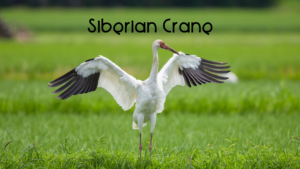
Conservation Status: Critically Endangered
The Siberian Crane is one of the rarest birds to visit India. With only a few remaining in the wild, this majestic white bird travels from its breeding grounds in Siberia to wetlands like those in Bandh Baretha during winter. Their dwindling numbers make sightings very special.
2. Egyptian Vulture (Neophron percnopterus)
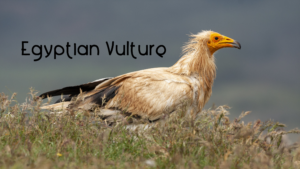
Conservation Status: Endangered
This rare species, recognizable by its distinctive white and black plumage with a yellow face, is a scavenger bird that visits the sanctuary. Although they are endangered due to habitat loss and poisoning, they continue to migrate across different parts of India.
3. Greater Spotted Eagle (Clanga clanga)
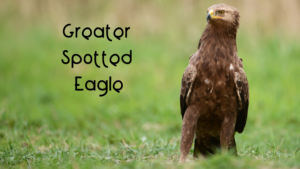
Conservation Status: Vulnerable
The Greater Spotted Eagle is a rare migratory bird that frequents Bandh Baretha. This majestic raptor is notable for its dark plumage and the distinctive white spots on its wings. Its numbers have declined due to habitat destruction, but Bandh Baretha remains one of the few places where they can still be spotted.
4. Black-necked Stork (Ephippiorhynchus asiaticus)

Conservation Status: Near Threatened
A large wading bird, the Black-necked Stork is relatively rare in India. It is known for its striking black and white coloration and its unique, iridescent black neck. Bandh Baretha’s wetlands provide a suitable habitat for this species, though sightings are infrequent.
5. Pallas’s Fish Eagle (Haliaeetus leucoryphus)
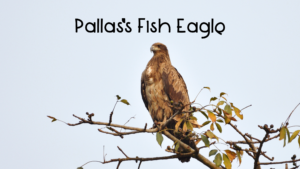
Conservation Status: Vulnerable
Another rare raptor, Pallas’s Fish Eagle, can occasionally be spotted in the wetlands of Bandh Baretha. It feeds primarily on fish and other aquatic prey and is considered vulnerable due to habitat loss and declining fish populations.
6. Indian Skimmer (Rynchops albicollis)

Conservation Status: Vulnerable
The Indian Skimmer, with its unique long beak and black-and-white plumage, is a rare sight in Bandh Baretha. This species, which skims the water surface for fish, has become vulnerable due to wetland degradation across India.
7. Sarus Crane (Antigone antigone)

Conservation Status: Vulnerable
The Sarus Crane is the tallest flying bird in the world and is considered vulnerable due to habitat destruction. These elegant birds are known for their impressive courtship displays and can be seen in the wetlands of Bandh Baretha.
8. Painted Stork (Mycteria leucocephala)

Conservation Status: Near Threatened
Known for its vibrant pink, black, and white plumage, the Painted Stork is a large wading bird commonly seen in the wetlands of Bandh Baretha. It forages in shallow waters for fish, making the sanctuary’s wetlands an ideal habitat.
9. White-breasted Kingfisher (Halcyon smyrnensis)

Conservation Status: Least Concern
One of the most colorful birds found in Bandh Baretha, the White-breasted Kingfisher has striking blue wings, a white chest, and a bright red beak. It can often be seen perched near water bodies, hunting for fish and small amphibians.
10. Purple Heron (Ardea purpurea)

Conservation Status: Least Concern
With its elegant long neck and deep purple-grey plumage, the Purple Heron is a large wading bird that frequents the wetlands of Bandh Baretha. It can often be spotted standing still in shallow waters, waiting to strike at passing fish.
11. Eurasian Wigeon (Mareca penelope)

Conservation Status: Least Concern
The Eurasian Wigeon is a migratory duck species that arrives in Bandh Baretha from Europe and northern Asia during the winter months. With its chestnut-colored head and pale grey body, it is a common sight in the sanctuary’s lakes and marshes.
12. Ruddy Shelduck (Tadorna ferruginea)
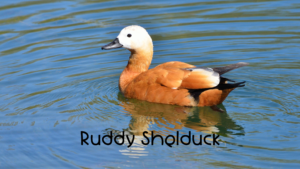
Conservation Status: Least Concern
Also known as the Brahminy Duck, the Ruddy Shelduck is a striking bird with a distinctive rusty-orange body and black-and-white wings. It migrates from Central Asia and Siberia to India, where it can be spotted foraging in the wetlands.
13. Common Pochard (Aythya ferina)

Conservation Status: Vulnerable
The Common Pochard is a diving duck that migrates to Bandh Baretha during the winter. It is easily recognizable by its reddish-brown head and black breast, frequently seen diving underwater in search of aquatic plants and small invertebrates.
14. Garganey (Spatula querquedula)
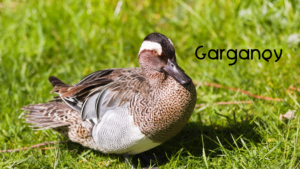
Conservation Status: Least Concern
The Garganey is a small migratory duck that travels from Europe and Central Asia. It has a distinctive white stripe running over its eye and is often spotted dabbling in the shallow waters of Bandh Baretha’s lakes.
15. Pied Avocet (Recurvirostra avosetta)

Conservation Status: Least Concern
A unique shorebird with a slender, upturned bill and striking black-and-white plumage, the Pied Avocet can often be seen wading through the wetlands, sweeping its bill side to side in search of small invertebrates.
16. Asian Openbill Stork (Anastomus oscitans)
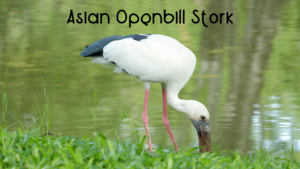
Conservation Status: Least Concern
The Asian Openbill is a large wading bird with a distinct gap between the upper and lower parts of its bill. It uses this gap to forage for snails and mollusks, which are abundant in the wetlands of Bandh Baretha.
17. Rosy Starling (Pastor roseus)

Conservation Status: Least Concern
A striking bird with pinkish body plumage and a glossy black head and wings, the Rosy Starling is a migratory species that visits India during the winter months. These birds often travel in large flocks, foraging for fruits and insects.
18. Common Redshank (Tringa totanus)

Conservation Status: Least Concern
Known for its long red legs and distinctive calls, the Common Redshank is a wader species often seen foraging along the muddy banks of the wetlands in Bandh Baretha. It migrates from Europe and Central Asia and is an expert at catching small invertebrates.
19. Osprey (Pandion haliaetus)
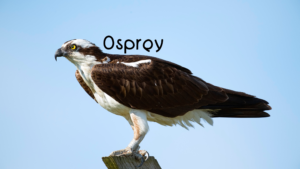
Conservation Status: Least Concern
A large raptor that primarily feeds on fish, the Osprey can be seen soaring over the wetlands of Bandh Baretha, searching for prey. With its powerful talons and keen eyesight, it dives into the water to catch fish in a spectacular display of hunting prowess.
20. Common Greenshank (Tringa nebularia)

Conservation Status: Least Concern
A tall wading bird with long legs and a slightly upturned bill, the Common Greenshank is a regular winter visitor to Bandh Baretha. It forages in shallow water for small fish and aquatic invertebrates.
21. Lesser Flamingo (Phoeniconaias minor)
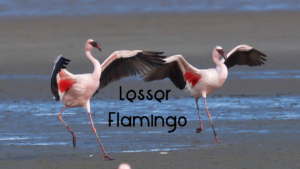
Conservation Status: Near Threatened
While less common than the Greater Flamingo, the Lesser Flamingo also makes an appearance at Bandh Baretha. Known for its deep pink coloring, this species feeds primarily on algae and small crustaceans found in the shallow waters of the sanctuary’s wetlands.
22. Peregrine Falcon (Falco peregrinus)

Conservation Status: Least Concern
The Peregrine Falcon, renowned for being the fastest bird in the world during its hunting stoop (dive), migrates to Bandh Baretha during the winter. These falcons are known for their sharp hunting skills, preying on smaller birds and mammals.
23. Wood Sandpiper (Tringa glareola)

Conservation Status: Least Concern
The Wood Sandpiper is a migratory wader that travels from Europe and Asia to India during the winter. It is a relatively small bird with brownish plumage and is often seen foraging along the edges of water bodies in the sanctuary.
24. Black-headed Ibis (Threskiornis melanocephalus)
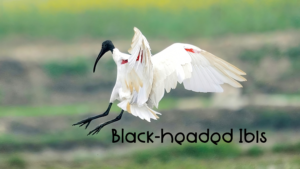
Conservation Status: Near Threatened
A large wading bird with a distinctive black head and curved bill, the Black-headed Ibis is a regular visitor to the sanctuary. It forages in the shallow waters, feeding on fish, frogs, and small aquatic animals.
25. Whiskered Tern (Chlidonias hybrida)
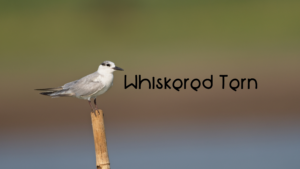
Conservation Status: Least Concern
The Whiskered Tern is a migratory bird often seen skimming over the wetlands in search of insects and small fish. With its light grey body and black cap, it is a graceful flier, commonly found near water bodies in the sanctuary.
-
The Role of Wetlands in Bird Conservation
Wetlands like those found in Bandh Baretha are essential for the survival of migratory birds. They provide resting spots, feeding grounds, and nesting areas for the birds during their arduous journeys. The Bandh Baretha Dam has created an extensive water body, ensuring that these wetlands remain active throughout the year, even during dry seasons.
Key Functions of Wetlands:
– Water Filtration: Wetlands act as natural filters, removing pollutants from water.
– Flood Control: They absorb excess water during monsoon seasons, preventing floods.
– Habitat Provision: Wetlands offer shelter to a wide array of wildlife, particularly waterfowl and migratory birds.
-
Challenges to Migratory Bird Conservation in Bandh Baretha
Despite being a crucial habitat, Bandh Baretha faces several environmental challenges that threaten its biodiversity, especially the migratory bird population. Understanding and addressing these threats is vital for the conservation of this sanctuary and its inhabitants.
6.1. Habitat Loss
Urbanization and agricultural expansion pose significant threats to the sanctuary. Encroachment into wetland areas disrupts the natural habitat of many bird species.
6.2. Water Pollution
Pollutants from nearby agricultural fields, such as pesticides and fertilizers, flow into the wetlands, affecting water quality and the food chain. Migratory birds that depend on these waters for feeding are particularly vulnerable to such contamination.
6.3. Climate Change
Global climate change is altering the migration patterns of birds. Warmer winters, unpredictable monsoons, and shifting seasons can impact the availability of food and nesting sites, forcing birds to alter their traditional migration routes.
-
Conservation Efforts in Bandh Baretha
Recognizing the importance of Bandh Baretha as a bird sanctuary, several conservation measures have been implemented to protect the migratory bird population. Efforts include habitat restoration, awareness programs for local communities, and collaboration with national and international bird conservation organizations.
– Wetland Restoration: Ensuring water bodies remain conducive to bird life.
– Anti-poaching Laws: Strengthening enforcement of wildlife protection regulations.
– Community Involvement: Educating and involving local communities in conservation efforts.
-
Best Time to Visit Bandh Baretha for Birdwatching
The winter months from October to March are the best time to visit Bandh Baretha Wildlife Sanctuary for birdwatching. During this period, the sanctuary is teeming with migratory birds from across the globe, making it a paradise for ornithologists and nature lovers alike.
-
Birdwatching Tips for Visitors
– Carry Binoculars: To get a closer look at the birds without disturbing them.
– Wear Camouflage Clothing: Blend in with the natural surroundings to avoid startling the birds.
– Keep a Safe Distance: Always observe the birds from a distance to prevent disrupting their natural behavior.

